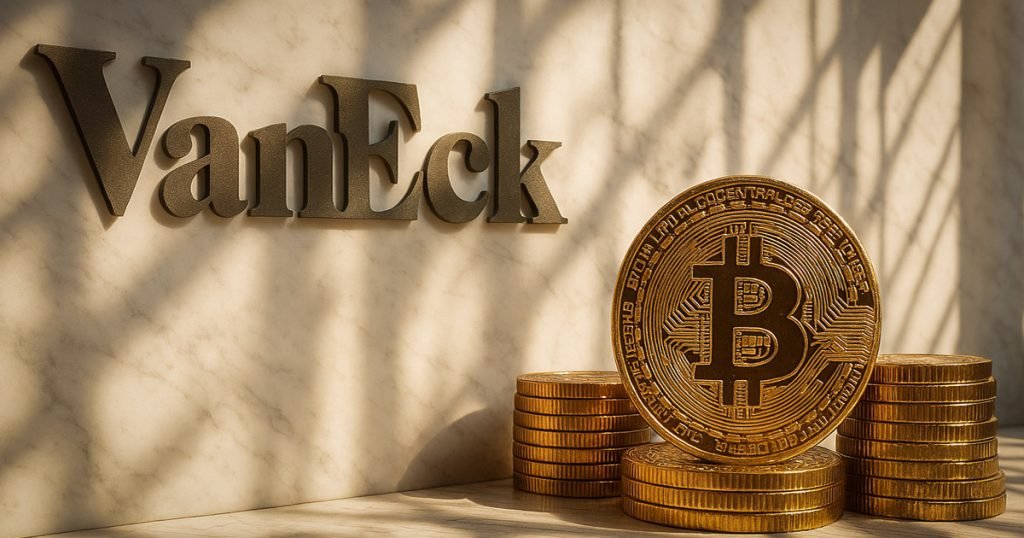Title: Bitcoin’s Rising Role Amid Global Trade Tensions: Insights from VanEck’s Matthew Sigel
In recent weeks, President Donald Trump’s announcement of new reciprocal tariffs affecting 180 countries has intensified global trade tensions, leading to renewed interest in Bitcoin (BTC) as a crucial financial asset. Matthew Sigel, head of digital assets at VanEck, emphasizes that as traditional financial systems face mounting politicization, Bitcoin’s neutral stance makes it increasingly appealing—or even essential—for countries navigating these turbulent economic waters. Following the April 2 announcement, Bitcoin saw a dip to around $81,000 due to a widespread risk-off sentiment. However, the cryptocurrency quickly stabilized and even managed to outpace equity markets in the days that followed, highlighting Bitcoin’s emerging role as a refuge for investors during times of uncertainty.
According to Sigel, while slower economic growth typically does not favor Bitcoin, the potential reaction from policymakers could shift the narrative. He notes that if these tariffs negatively impact GDP but do not ignite a new wave of inflation, the Federal Reserve might consider cutting interest rates. Such measures could reintroduce the liquidity that Bitcoin has historically thrived under, underscoring the cryptocurrency’s unique position in these unstable times. Sigel further argues that the increasing politicization of traditional banking systems has led to a growing demand for alternative financial infrastructures—of which Bitcoin is a prime example.
The evolution of Bitcoin’s role within global trade is becoming increasingly evident, with various nations embracing digital assets for cross-border settlements. Sigel points out that intelligent reports now indicate a significant development in which China and Russia have begun to settle certain energy transactions using Bitcoin and other cryptocurrencies, marking a pivot away from the dollar-centric financial system that has dominated international trade. Moreover, Bolivia has announced plans to utilize digital assets for energy imports, especially as the nation grapples with limitations on foreign reserves and payment networks.
In Europe, the situation is no different. French state utility EDF is exploring the viability of Bitcoin mining as a way to capitalize on excess electricity, which is currently being exported to Germany at a loss. This initiative reflects a proactive approach to monetize surplus energy in an increasingly unpredictable pricing environment. Sigel articulates that these scenarios are no longer merely theoretical; they represent a monetary realignment that is occurring in real time, indicating that the recent tariffs may serve as a catalyst for countries to rethink their reliance on U.S.-dominated financial systems.
Investors are advised to closely monitor the Federal Reserve’s policy maneuvers, as shifts toward more dovish stances regarding interest rates and an increase in liquidity could historically act as a boon for Bitcoin. The U.S. Dollar Index (DXY) is another vital metric to watch; a decline in the dollar’s strength could further bolster Bitcoin’s status as an effective hedge against traditional market volatility. Despite the recent fluctuations in the market, U.S.-listed spot Bitcoin ETFs have maintained a net positive flow of approximately $600 million this year, driven by inflows observed in late March.
This sustained interest in ETF products and on-chain activity indicates a growing appetite from institutional investors, reflecting a broader shift in how Bitcoin is perceived as an asset class. With increasing institutional engagement and a backdrop of geopolitical and economic changes, Bitcoin is emerging not just as a currency but as a key player in the evolving landscape of global finance. In essence, the geopolitical dynamics stirred by Trump’s tariffs are accelerating the adoption and practical use of Bitcoin in international trade, redefining its position in the global financial ecosystem. As these trends continue to unfold, the relevance and importance of Bitcoin are likely to expand, making it a critical asset to watch in the coming years.


